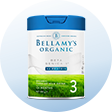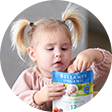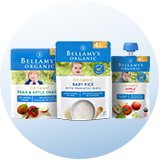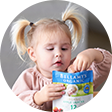How to live Wheat Free with Children
Only wheat grains and ingredients made from wheat, need be avoided by those with a childhood wheat allergy. This makes a wheat-free diet similar to a gluten-free diet, but with a few more food choices. If you are eating gluten-free; the grains wheat, rye, triticale, spelt, barley, controversially oats, and ingredients made from them, are all off the menu. The bulk of the wheat-free diet mimics gluten-free eating, consisting of fresh fruits, vegetables, plain meats, eggs, plain dairy foods, legumes, nuts and seeds. Most commercial pastas, breads and baking products consumed tend to be gluten-free. However, 100% rye bread and other wheat-free, rye, barley and oat products can be eaten. For example, barley malt extract in breakfast cereals is no longer a concern, opening up a wider choice of rice and corn-based cereals for those avoiding wheat instead of gluten. You will need to become familiar with words on a food label that refer to wheat and its different forms.
- Durum, spelt, einkorn, emmer and kamut/khorisan are different types of wheat.
- Semolina, bran, faro, farina, wheat berry, bulgur/burghul and wheat germ are different milled or processed sections of the wheat grain.
- Triticale is a hybrid of wheat and rye, so should be avoided on a wheat-free diet
-Couscous is not a grain at all but a commercial product made from durum wheat or semolina. You can sometimes find wheat and gluten-free versions of couscous, but make sure you read the label correctly.
- Plain, self-raising, wholemeal, enriched, atta, Graham, maida & all-purpose flours are ground to a variety of levels of fineness, from different kinds of wheat, and include different parts of the wheat grain.
- Hidden wheat protein which will mostly be gluten is commonly found in processed foods because it improves their texture, flavour and holds in moisture.
- Seitan or Vital wheat gluten is isolated from wheat and modified to improve the structure of baking products or to increase the protein content of lower protein wheat-free flours. It is often used in faux meats to boost plant protein sources in vegetarian and vegan cooking. It’s also found in some seafood such as crab sticks.
- Wheat starch (wheaten cornflour), is the refined starch portion of the wheat kernel. It is a popular thickener in commercial products. Only very small amounts of wheat protein remain, but avoidance is still recommended, unless otherwise advised.
- Wheat refined thickeners and emulsifiers could be found in yoghurts, ice-creams, butter, seasonings, marinades and dressings (2). The manufacturer must state on the label if a wheat-derived ingredient has been used. Very little wheat protein remains, but they should be avoided unless otherwise advised.
- Glucose syrups from wheat are highly refined to remove the protein. If proteins remain, they are not effective gelling agents in confectionery. This refining process is so successful that it is the only wheat-derived ingredient considered safe for all those with a wheat allergy.
Seek help from an experienced dietitian to advise how to change the diet to ensure your child's’ nutrition is maintained for growth and development. Further information can also be found at these sites.
Further reading
https://www.allergy.org.au/patients/food-allergy/ascia-dietary-avoidance-for-food-allergy/wheat https://allergyfacts.org.au/allergy-anaphylaxis/food-allergens/wheat https://www.slhd.nsw.gov.au/rpa/allergy/resources/allergy/wheatallergy.pdf
References
1. Venter C et al. A patient-specific approach to develop an exclusion diet to manage food allergy in infants and children. Clin Exp Allergy. 2018;48:121–137. Jessica R Biesiekierski. What is gluten? Journal of Gastroenterology and Hepatology 2017; 32 (Suppl. 1): 78–81. doi:10.1111/jgh.13703
































